Aidan: Judging things as a collective is always a flawed process. Yet for simplistic presentation we stick anything we can into top tens, best of year or greatest hits. To stick a label on so much diverse content is always a matter of point in time favoritism that likely won’t be true in five years or even five minutes from now. But here we are bundling all the anime of the year into a post for easy digestion and judgement which I must insist is highly opinionated. For a general impression of the year I admit to it being a year where there were not many shows that I felt strongly about. There were shows that certainly are good but if asked which was the best of the year I would find that I wouldn’t be all to enthusiastic regardless of my pick. However this could be very much due to this year being a rather busy and tiring year for me which come with the pains of turning thirty and finally admitting that I am no longer young anymore.
Before you scroll down and prepare to scream at us for neglecting the absolute masterpiece of animation that you consider was best of the year allow me to fully concede that this post is far from an ironclad perfection. Our method of choosing this particular winners isn’t foolproof and is dependent on each writer’s knowledge of the anime of that year. I myself prove to be the worst liability in this regard considering that I just didn’t watch much anime this year and started many a series only to forget to finish them. As such you may notice some glaring omissions like the new seasons of Attack on Titan or Boku No Hero Academia which I can assure you are mainly missing due to none of our writers having a particular interest in continuing them. (Though Hero Academia fans you do have an ally on the team with Lenlo. Sadly he’s outnumbered by the rest of us.) Even I find the final list below to be missing some standouts so I at least recommend that you do not use this post as your single source on what to watch from this year.
Each writer has taken up writing a blurb for each show with a tally on what we all voted as the best of the year down below. Once again we do not expect you to agree and if anything maybe we might get you to check out a show you may have overlooked this year. Wakanda forever, let’s jam.
Worst of the Worst
Worst Show: Itou Junji Collection
Aidan: While an argument can be made over there being worse shows than Junji Itou Collection, it can be said that at least those shows have more of an excuse. Junji Itou is a horror mangaka of legendary status that to consider him the HP Lovecraft of manga is not such a far fetched statement. His work has inspired plenty yet failed to gain an adaptation be it live action or otherwise which truly gave his work justice. This anime was a chance to take that work and transform it to a new plane, adding a potential great anime to the rather underexplored anime horror genre. However due to shoestring animation, a general lack of passion or care and oddly chosen stories this anime took these stories and killed the soul out of them. Making what was considered terrifying, unnerving and otherworldly into something aggressively mediocre.
Runner-up: CONCEPTION, for being the first show to put up a link to a website when asked for worldbuilding.
Biggest Disappointment: Steins;Gate 0
Lenlo: I had high hopes going in to both of these shows. Both are mystery thrillers with time based shenanigans, and a wide cast of characters. Both start off well, with a promising premise. Both fall apart halfway through because of lackluster villains and a poor use of their premise. However, what sets them apart is their lineage. Kokkoku only had to live up to an existing manga. Steins;Gate 0 however had to live up to one of the best time travel, nay best thriller anime, ever made. A premise that has already been proven to work. A cast the everyone already loved. A darker follow up to an already fantastic series. And Steins;Gate 0 manages to drive all of that into the ground by ignoring existing characters, adding in pointless new ones and generally disrespecting the audience by thinking it could pander to us on nothing more than our love for the original series. It is because of this that Steins;Gate 0, hyped up for almost 8 years since the original, is the most disappointing anime of 2018.
Runner-up: KOKKOKU
Worst First Episode: Ore ga Suki nano wa Imouto dakedo Imouto ja Nai
Mario: Here’s the proof that as long as it sells no one cares about the goddamn content. It’s another LN adaptation about a high school LN author who always has a cute sister to bang. The first reason for my distaste of it is because of the high level of self-masturbation, and the second reason is that it has the maturity of a 14-year-old kid. Like its predecessor Eromanga Sensei it goes through all the stupid cliches: a team of hot harem girls who already have the hots for a no-face male lead, a perfect little sister, panty shots, boob grabbing, a nip-slip loli and a blind devotion to Light Novel industry… I put the blame on the otaku market that keeps buying this kind of lazy writing. The main girl is so unbelievably perfect that she feels like a generic object of affection. I mean, this show knows all the common tropes but glorifies it so that it can appeal to its target audience. The fact that the production went astray later was just the straw that broke the camel’s back. Honestly it’s the most lazily written premiere I’ve watched in years.
Runner-up: CONCEPTION
Worst Character: Ayano Hanesaki (Hanebado!)
Wooper: Ayano began life on screen as a disillusioned badminton prodigy, whose abandonment by her mother had left her empty and unmotivated. From here, Hanebado had the option of going the typical sports anime route and slowly bringing her closer to her teammates as she regained her passion for the sport. This would have been fine, if a little too familiar, but this show wasn’t satisfied with retreading fertile ground. Instead, it made Ayano into a schizophrenic mess, whose transitions between “heartless bully” and “innocent child” were made all the more jarring by her inhuman eyes. Seriously, the show’s way of letting you know which version of the character you were about to get was to invert the light green of her irises with the darker green/black of her pupils. This might have worked in a much grittier action series, or a campier sports/comedy mashup, but Ayano’s petulance and occasional cruelty made it feel like a desperate stab at explaining her bizarre behavior. Every time you think she’s about to have an emotional breakthrough, she purposefully humiliates someone on the court, and every time you think she can’t get any edgier, she starts obsessing over her favorite kids show mascot, Wei-Wei the whale. Together with her neglectful mother, Ayano’s inconsistency took this series from potentially fun to confusingly bad.
Runner-up: KAGARI (Steins;Gate 0)
General Categories
Best First Episode:
Shoujo Kageki Revue Starlight
Wooper: This was my favorite premiere since Made in Abyss’ first episode last year, so it’s probably not a coincidence that both of them were produced by Kinema Citrus. There’s an shared emphasis on intrigue, mood, and terrific lighting between the two, but while Abyss works its central mystery into every corner of its debut, Revue Starlight takes a more cryptic position, using a prodding orchestral score and deceptive character introductions to hint at its true nature. Starlight’s first episode is positively loaded with symbolism, as well, from blood red curtains to dreams of Tokyo Tower to a transformation scene that will leave you scratching your head if you’re not prepared for it. And the combat sequence at the end, set to the vocal performance of its participants, hits delicious levels of choreographed smoothness that most TV could never reach, with a hook that had me hyped to see what was next. Opinions on the show’s finale are split amongst our writers, but it certainly started off with a ton of promise.
Runner-up: HISONE TO MASOTAN, for simple but striking and expressive designs, a refreshing story about dragon piloting (note: not riding) that doesn’t take itself seriously, and whole lot of offbeat humor as a pepper on top.
Best Single Episode: SSSS.Gridman (Episode 9)
Mario: This episode comes pretty late in the year (I believe it was in December) but since then it claims this slot handily. This episode relies heavily on symbolism and on its visual strengths that the more you look back to it (or the more you rewatch), things start to unravel itself and become much clearer. It has many single striking shots, like the moment where Akane jumps off the crane which remains one of cinematic highlights for me. Not only does it flirt around with dream/reality boundary that is one of my jams, it also deepens Akane’s narrative in most unexpected way.
Runner-up: CASTLEVANIA (Season 2, Episode 7)
Most Pleasant Surprise:
Sora yori mo Tooi Basho
Mario: Billing itself as a CGDCT show, Sora Yori surprises us on how it handles its tricky concept. A trip to Antarctica when they’re high school girls can sound like a pipe dream, but Sora Yori never glosses over those issues, instead approaches them with thorough research. Every stage of the trip is planned carefully, they never make light comments about high-school girls going for such harsh trip and indeed, they point out many times how extreme this trip can be. It’s also a story about self-discovery, friendship, and coming-of-age where every girl knows this trip can be a valuable life lesson for them.
Runner-up: SEISHUN BUTA YAROU WA BUNNY GIRL-SENPAI
Best Studio: Kyoto Animation
Wooper: When a studio puts out three high quality TV series and two well-received films in a single year, they’re a shoo-in for this award. Violet Evergarden was a long-awaited technical marvel in a field of misfires and mobage ads, while Tsurune and Free S3 yielded episode after episode of solidly-directed and drawn sports drama. For many cinematography nerds, Liz and the Blue Bird’s release was a landmark moment not just for the year, but the decade; our writers thought it leaned too heavily on style without the story to match, but it was certainly a worthy addition to Naoko Yamada’s filmography. And though I didn’t see the Chuunibyou movie, plenty of fans claim that it rescued the franchise from a disastrous second season, which is a sure sign that the film did something right. Much has been written elsewhere on the Internet about KyoAni’s efficient production methods and ethical treatment of their employees, so I won’t regurgitate any of that here, but it’s certainly nice to believe that there’s a link between good corporate practices and well-made anime.
Runner-up: WIT STUDIO, for the consistently beautiful production it lavished on Koi wa Ameagari, and for getting back in the saddle with some praiseworthy Titan action.
Best OP: “Flashback” (Kokkoku)
Lenlo: Flashback is an OP too good for its own series. Kokkoku fell into a disgusting mess, while its OP plunged so deep into heart pumping psychedelia that I have it on my playlist to this day. The visuals are engaging, creating and colorful. Visually showing everything from the family dynamics to the core premise of the show, stopped time. The music itself is a fierce sort of techno that would not be out of place at a rave, yet is also more than typical pumping rave music. It’s hard to describe, I am no musician myself. Suffice to say, I love this OP, everyone on staff loves this OP, and we think you would love this OP too.
Runner-up: “MAN HUMAN” (Devilman Crybaby), for its addictive and pulsating electronic beat, plus its inky black-and-white aesthetic that folds tons of imagery into such a small package.
Best ED: “Le temps de la rentrée” (Hisone to Maso-tan)
Mario: French summer song has never sounded so cool and addictive. It reminds me a great deal to my favorite Francoise Hardy (which this song is supposed to come from the same era), boasted by those moving hips and their deadpan expressions. It also speaks very well to HisoMaso upbeat themes and the animation of these girls dancing are such a joy to watch. It’s one of these few EDs that I was always looking forward to every week and remember, hips never lie.
Runner-up: “FUKASHIGI NO CARTE” (Bunny Girl-senpai)
Best Animation:
Violet Evergarden
Lenlo: Alright, let’s be real here, raise your hand if you were expecting Violet Evergarden to win this? Already KyoAni is known for its beautiful animation, and they went above and beyond in making Violet Evergarden. Yes, it lacks the bombastic and action packed sequences of its runner up Devilman Crybaby. However it more than makes up for this in its consistently smooth, beautiful and highly detailed character animation of the course of its 13 episode run. Everything from the cloth and hair, to the hands and typewriters are immaculate. So much so that in some scenes, the digital effects added on top actually take away from the original animation. Simply put, Violet Evergarden’s animation is so good, I think I developed a prosthetic hand fetish just watching Violet type.
Runner-up: DEVILMAN CRYBABY
Best Background Art: Violet Evergarden
Mario: While I certainly am not a fan of Violet Evergarden’s heavily filtered post-production, there’s no denying that the rest of the show looks gorgeous and there’s no single drop of quality in any episode. One of its power is the various settings Violet goes through throughout the series. The world setting has natural and lush landscapes. All the settings look different and all of them are rich in details (the starry night, for example). In one episode, she’s in a tropical village with buffalo and agricultural field, in the next one, she in the mountainous village with European style architecture. Furthermore, it’s one rare production where all the background characters are fully portrayed with their own costumes and figures. The use of color is mostly well done, in which they focus more on excessive details and realistic looks than Shaft’s impressionist style
Runner-up: MAQUIA: WHEN THE PROMISED FLOWER BLOOMS, for creating a gorgeous and detailed-laden fantasy universe that evolved alongside its generation-spanning story.
Best Soundtrack: Devilman Crybaby
Aidan: Devilman Crybaby is a show with a lot of things going for it and out of all of them the soundtrack may be the closest to perfection. Devilmans soundtrack is a fest of nostalgia fueled synth along with emotional uplifts to heighten the soul of tragedy and redemption. Devilman had the soundtrack that felt like it came from the 80’s which aided it’s feel of being of a modern version of old anime OVAs. I need not mention the addictive Devilman no uta theme which is akin to a modern rasputin and the series opening which abandons typical jpop conventen for a more subdued chanting and thump beat dripping with atmosphere. It’s a soundtrack which may not make an impression upon watching the show but when you sit down to listen to it you realise just how many times it came to save the day when the narrative didn’t quite succeed. We even have episodes opening with Japanese rap of all things and it is excellent. So I believe it would be good to remind people that this series had more songs worth listening to in it than just Devilman no uta.
Runner-up: MEGALO BOX, for reasons obvious to those that watched it.
Best Voice Acting: Kana Hanazawa (Hinata, 3-gatsu no Lion 2)
Wooper: 3-gatsu’s second season cast a bigger spotlight on the Kawamoto family than ever before. Akari struggled with her dual roles of provider and caretaker, Someji was highly involved in the fairs and festivals where he and his granddaughters sold their confections, and Momo’s abounding sweetness was crucial as her older siblings went through some dark times. But it was the famous bullying arc, which put middle child Hinata through the emotional ringer, that provided the biggest character showcase of the season, and Kana Hanazawa proved herself worthy of the opportunity. With a performance than ran the gamut from shattered sobs to vicious declarations of war on her tormentors, HanaKana demonstrated a range that has made her one of the most beloved seiyuu working in the industry today. There were plenty of quieter moments for her to play with, too, often involving Hina’s friendship with her former classmate Chiho, or her budding ambition to one day take over the family business. Hanazawa-san’s sunny delivery worked like a charm in these scenes, reinforcing her character’s innate goodness even as she dealt with pain and alienation in her school life. 3-gatsu is full of great voice actors from multiple generations, but for me, she was a standout among standouts.
Runner-up (tie): HINA KINO (Hanako, Asobi Asobase) and MAMORU MIYANO (Kentarou, ZombieLand Saga), for their unhinged, flamboyant performances as characters with absolutely no filter.
Best Character: Akira Tachibana
(Koi wa Ameagari no You ni)
Lenlo: While I can comfortably say I do not know what it is like to be a teenage girl with a crush, that didn’t stop me from loving Akira Tachibana in Koi wa Ameagari no You ni. That feeling, that terrifying feeling, of loving someone but being unable to voice it is familiar to everyone I am sure. Though no doubt our objects of affection were much closer to our own age. Combine that with the underplayed, but present, issues regarding her track career and she becomes a multifaceted, well rounded character. It is these mostly relatable struggles that earned her this spot. There is something about Tachibana that I am sure everyone can connect with, even if you’re not a teenage highschool girl.
Runner-up: RETSUKO (Aggressive Retsuko), relatable is the word of the day and Retsuko’s everyday struggles speak volumes here because of how real her environment is. The decision to make her an anthropomorphic character makes her even more sympathetic.
Best Cast: Sora yori mo Tooi Basho
Lenlo: It was a fierce competition between these 4 girls and an entire University track team, but somehow these little girls defeated them. Sora Yori is without a doubt one of the best character dramas of the year, so it stands to reason its cast would be of a similar quality. Each of the girls are lovable in their own way, with distinct personalities and quirks, and issues they must work through over the course of the series. The real magic though is in seeing these girls interact with and get through the story together. Their chemistry is fantastic as they play off of each other. Sometimes being goofy, sometimes serious, I am sure everyone can find one of these four to connect with. Whether it be through the loss of a family member, a desire to get away, to experience an adventure, or just to make friends.
Runner-up: KAZE GA TSUYOKU FUITEIRU, for advancing the stories of 10 college athletes simultaneously, and giving each of them just the right amount of time in the spotlight.
Genre/Format Awards
Best Comedy: Pop Team Epic
Lenlo: Boy writing a paragraph on Pop Team Epic… that is a challenge. Simply put, there is no other anime that seeks to or succeeds more at shitposting the audience into submission, than Pop Team Epic. There is no common throughline. There is no greater story. Pop Team Epic is not trying to comment on society. It is simply the greatest collection of pop culture, internet in jokes and memes, shoved into a single 11 minute anime that has even been conceived. So dedicated is Pop Team Epic to this goal, that it has recordings, one male and one female, for each episode. So dedicated is Pop Team Epic’s crew, that it features multiple live action segments and limited animation, that at some points you would be forgiven for forgetting it was an anime at all. Will all the jokes make you laugh every episode? No, of course not. But I challenge you not to giggle at least once, even at just the absurdity of what is on screen, on each and every episode. It is for this, and its complete dedication body and soul to the art of shitposting, that Pop Team Epic wins Best Category for 2018.
Runner-up: HINAMATSURI
Best Action: Devilman Crybaby
Aidan: Boku No Hero fans I can hear your “REEEEEE” of hate from here and from an animation standpoint it may even be more deserving of this award. But a reimagining of a Go Nagai manga that very well could have helped create the very tropes that are the backbone of Boku No Hero’s narrative does at least give it some credence in claiming this award. Not to mention being the only Masaaki Yuasa work where the animation didn’t get in the way of my enjoyment of the series. Devilman Crybaby is what i would consider an excellent update to a manga whose age could discourage some from checking out. Some would argue it’s timeless but I feel something like Devilman Crybaby is a much more relatable way to convey this story to a modern audience. This story is brutal in its violence and sincere in what it has to say. The ending in particular is a punch to the gut not many stories these days would have the guts to even attempt. This series has its degrees of flaws, in particular how fast it rushes to that ending but it is something that shows its legacy.
Runner-up: PLANET WITH, for being the anime Studio Trigger wish they could make.
Best Drama: Koi wa Ameagari no You ni
Wooper: After the Rain features a lot of great dramatic moments, but its repertoire is bigger than just one genre. Comedy, romance, and slice-of-life passages are threaded through its short 12-episode run, which creates a sense of depth that’s rarely found in other single cour series. Take manager Kondou’s humorous misunderstandings, for example. Though they’re very funny (and well-acted by Hiroaki Hirata), they mask the self-deprecating spirit of a man who has given up on his dream, and his contemplation of pursuing that dream again in middle age gains more gravity as the show progresses. The personal and emotional lives of its primary duo are given thorough examination, which lends believability to the one-sided love affair between two people nearly 30 years apart in age. Supporting cast members play a comparatively smaller role, but their romantic successes and interpersonal struggles keep the series grounded in a world that is sometimes inviting and sometimes harsh, just like the reality it closely captures. It’s the presence of these other elements that make Ameagari an eminently followable drama, rather than one that leaves you on the edge of your seat each week.
Runner-up: SEISHUN BUTA YAROU WA BUNNY GIRL-SENPAI
Best Short: Aggressive Retsuko
Mario: Well, the truth is that I didn’t think of Aggretsuko as short until this write-up. Aggretsuko is a straight-up solid show through and through. What it resonates with me the most, apart from how relatable it is, is its atmosphere. It almost feels like we are watching the daily struggles of one of our close friends. The humor is grounded simply because they never make light of her issues. Meeting expectations, enduring horrible colleagues and bosses, and striving for an escape although she’s never quite sure what to do next, they are all rooted in reality, yet somehow it’s funny and sincere and has lots of heart.
Runner-up: EMIYA-SAN CHI NO KYOU NO GOHAN
Best OVA: FLCL Progressive
Aidan: Allow me to be the first to admit that FLCL Progressive doesn’t win this award based on on being the best OVA per se, so the title of this award is misinformed. More on the grounds of being one of the few OVAs that we all actually watched. Nevertheless I think this would be a good place to discuss this series and its sister series Alternative. These series certainly have gathered quite a lot of hate and I find them interesting on the grounds of just how people compare them to the original FLCL. I myself do not hold FLCL in quite as high a regard as others do but when looking at opinions on this series it’s rather amusing to see how deified the original FLCL has become. Honestly seeing people talk about how “deep” the original characters are makes me raise an eyebrow. Personally I feel that if FLCL was released today and not all those years ago it wouldn’t have the level of critical acclaim that it has these days. So when it comes to Progressive I have no real love or nostalgia to hinder my view of it and I personally enjoyed it quite a lot. I feel it did enough to be its own entity and acted as a good effort to make a sequel to something as nonsensical as FLCL. The matter of it being a good sequel is up for debate but as its own standalone series I feel it’s an enjoyable little watch. So I feel that if someone truly wants to like these series then letting go of any preconceptions or comparisons to FLCL original can help you appreciate it. See it more as a spiritual sequel rather than a genuine continuation.
Runner-up: ASAGAO TO KASE-SAN, for its delicate depiction of a fledgling lesbian romance, and for some of the best and subtlest character animation of the year.
Best Film: Maquia – When the Promised Flower Blooms
Wooper: Maquia is a film with big aspirations. Its medieval fantasy tale spans multiple generations, with the theme of motherhood threaded through its story like the Hibiol cloth its characters weave. Its breathtaking background art creates a world to match this ambition – one that keeps its audience enraptured even when the story runs slightly off course. From idyllic seaside villages to bustling iron cities, Maquia goes everywhere in pursuit of its characters, who travel in search of a peace that never lasts. Simple designs gave the animation team freedom in communicating the characters’ happiest and most desperate moments, creating a gulf between the two emotions that aided the film’s gigantic scope. Some of the more dramatic scenes were given real poignancy by Mari Okada, who both penned and directed the movie, adding another accomplishment to her towering resume. She and a veritable army of animators and artists made something very special in Maquia, which helped fill the Ghibli-shaped hole in my heart for another year. The film isn’t without its faults, but it’s worth remembering as one of the most ambitious animated projects of the decade thus far.
Runner-up: MIRAI NO MIRAI, a perfect family-oriented feature that respects the child’s point of view with all the mature sentiments around it.
Top 10 Anime of 2018
Here’s a link to our individual ballots, so you can see how we settled on these shows in this particular order. Let’s kick things off with a tie at 10th place (same as last year):
10 (tie). Shoujo Kageki Revue Starlight
Mario: I’m happy to say that the #10 tie is reserved for two of the most ambitious projects of the year. Revue Starlight is inspired by the visual motifs from Ikuhara’s works (which comes as no surprise given the director Tomohiro Furukawa worked with Ikuhara during Penguindrum) and it has some of the best visual storytelling this year has to offer. Apart from the stage duels that have a lots of interesting shot angles and well-choreographed battle sequences, I am even more impressed when it comes to the show’s mundane slice of life part. It’s one of the rare shows where the visual is expertly crafted so that even if you turn off the audio and subtitles, just looking at what unfolds on-screen will give you a good idea of the context. As Revue Starlight is a multimedia project between an anime and a musical stage, the music is also another strength to this show. Moreover, the narrative also revolves around stage and is constructed like one. The cast is diverse and while I feel that some of them aren’t used to their full potential, there is still some solid chemistry and some gripping drama to enjoy. The Banana Arc stands out for me in that regard.
10 (tie). SSSS.Gridman
Mario: In the same spirits with Revue Starlight above, Gridman is a bold anime with an eye for visual execution. GRIDMAN is a show of two halves, one half implies more “Anno’s school” of static, lingering shots, the other it goes all out with dynamic climax battle scenes. The lingering approach gives the audience an offbeat and surreal sense, that what happening on-screen isn’t necessary real, which in turn fits neatly to the reveal later on. What I’m impressed the most about its visual framing however, is how it uses the distance between the characters to enhance their chemistry or depict the characters’ state of mind. Sequences where Rikka and Shou hole up in their own misery after Gridman’s defeat through the smart use of mirror reflection, or the moments where Akane jumps off the crane in episode 9. While personally I’m never that fond of Trigger’s narrative nonsense, this show is up there as my favorite Trigger show and could very well be their best.
9. Planet With
Aidan: Satoshi Mizukami is one of the most unsung heroes of the manga industry and has three works which could make for amazing anime. Planet With is not an adaptation of those three but it is a testament to just how strong a writer Satoshi is. Planet With feels like a two cour show which has been crushed down to a single cour and yet miraculously doesn’t suffer from that condensation. It is an anime which starts small and yet builds itself up with each passing episode accomplishing more in a single cour than few do in a fifty episode anime. Planet With is the best studio Trigger anime that Tigger never managed to make. It has a great cast of characters, great pacing, a story of twists and turns and a satisfying finale that ties everything up. The only downside is some rather mediocre CGI but this series proves that this author could make something astounding if given the resources to do so. At the very least the fact that an adaption of Spirit Circle or Biscuit Hammer isn’t in the works is downright criminal.
8. Pop Team Epic
Lenlo: I keep using this phrase when describing Pop Team Epic, because it is the most accurate summation of the series I have ever read. Pop Team Epic seeks to, and almost always succeeds at, shit posting the audience into submission. At the end of every episode, you have no idea what has happened, or if the last 10 minutes of what you watched was actually good or not. Sometimes, Pop Team Epic itself probably doesn’t know the answer to that. Yet what I do know is that no other series has merged as many forms of art, animation or expression as far back as I can remember in anime. Live action, flip-book, cell, digital, plus whatever other kinds I missed. Add on to that an understanding of pop-culture and a willingness to weaponize that even 4chan would respect, and you have the makings for a one of a kind comedy. Something that I doubt will ever be replicated. It is for that achievement that Pop Team Epic earns its place on this list.
7. Devilman Crybaby
Aidan: Considering how Devilman Crybaby swept up two of our awards this year, I would think it’s quite obvious as to why it’s here on this list. It’s a reimagining of a Go Nagai classic for the modern era that manages to capture the story of the original yet adds enough so that it doesn’t come out as dated. Devilman Crybaby is a 80’s OVA that was made in the 2010’s and its soundtrack celebrates that along with hyper violence that almost represents the more B-movie style of the decade. With a story that is equal parts heroically tragic yet inevitable right up to its closing lines. This is an anime to watch to see just where many of the inspirations of other greats came from and how it was a milestone for anime in general.
6. Kaze ga Tsuyoku Fuiteiru
Lenlo: Look, I know it hasn’t finished airing yet, but only 1 cour in and Kaze ga Tsuyoku Fuiteiru, Run With the Wind, has earned a special place in our hearts. From its handling of abuse in sports to its outstanding cast of characters, even its beautiful running animations, Kaze Fui is something special. The anime that it reminds me most of last year is Rakugo, where the characters and their interactions are leagues above so many other series. With a full cour left to go, all of us here are excited to see where it leads and if it can finish as strongly as it started.
5. Sora yori mo Tooi Basho
Wooper: Sora yori is funny, heartwarming, and dramatic – and often loud in the process. It presents its most appealing characteristics very plainly, which attracts even the people who ordinarily wouldn’t be caught dead watching a show with an all-female main cast. That’s an achievement in itself, and a happy one for fans of good anime, since its story is worth watching. But there’s a side to the show that I feel a lot of people have overlooked, and that’s its ability to create small, quiet portraits of human emotion. My favorite is probably Shiraishi’s sadness at her classmates’ abandonment of a group chat they shared. As a student and actress with an impossibly busy schedule, the feeling that she’s missed another opportunity to make friends crushes her, and the show observes silently as her shoulders slump at the proof of her failure. Then there’s Mari’s forgiveness of a friend that attempted to sabotage her trip to Antarctica, which is offered so willingly that her kindness overpowers the viewer, in spite of the scene’s brevity. Sora yori features poppy insert songs and chirpy voice acting to hook a mass audience, but make no mistake, it’s equally committed to revealing the subtle humanity of its cast.
4. Megalo Box
Lenlo: Megalo Box is a series out of time, closer to something you would find in the late 90’s, early 00’s, than 2018. This is shown in many ways, from the animation style and character arcs, to often terrible video compression, though here it’s on purpose. Yet for whatever its faults, Megalo Box successfully brings its viewers back to an age of anime past. Heralding all the way back 50 years ago to Ashita no Joe, which Megalo Box is a spiritual successor to, as its anniversary project. It is for this phenomena, along with its fantastic character drama and story telling that, even with its sometimes lackluster fights, earns Megalo Box its spot on this list. As I said when I first reviewed it, Megalo Box is not a sports anime, but a character drama that happens to involve sports. And I love a good character drama.
3. 3-gatsu no Lion 2
Wooper: 3-gatsu’s second season accomplished so much that it’s difficult to write anything less than an essay about it. While Rei’s depression and Shimada’s personal and professional struggles dominated its first season, this one shone a spotlight on the Kawamoto sisters, expanded the shogi universe by dedicating plenty of time to supporting characters, developed Rei’s friendships at school and brought him to a much healthier place, offered a critique of the Japanese principle “ganbaru,” humanized rival character Nikaidou, examined the generation gap present in a sport with tremendous age range, and probably a dozen other things I’m not remembering at the moment. The series was occasionally plagued by limited animation, and Kyouko’s near-disappearance from the story was a letdown, but apart from these small issues, these 22 episodes were every bit as strong as the show’s pedigree would lead you to believe. This is a series that’s packed full of joy and sorrow, often surfacing within minutes of each other, yet always managing to find their mark.
2. Hinamatsuri
Aidan: Hinamatsuri is a master class on how to adapt a comedy manga and make it work for a animated format. Where Grand Blue failed, Hinamatsuri succeeded with it being able to make its viewers laugh or even cry at its antics. It’s a deceptive show as with the supernatural aspect you would believe this would be a series with action at its forefront, but instead you just get absurdity along with wholesome life lessons being taught to kids. A precarious balancing act that somehow worked in this show’s favor and ended up with the best comedy anime of the year.
1. Koi wa Ameagari no You ni
Mario: Almost nine months have passed since Ameagari ended, but even now, when I think about the show, I feel the elegant score, the rainy sound, the conversations between our lead Kondou and Tachibana, the absolutely gorgeous visuals, and a fond feeling to its thoughtful story. The show assembles two layered, relatable leads and develops their chemistry to such an extent that every time they spend time together, it bounces for some special moments. Not only that, the show lets us hear Kondou’s inner voice of regrets and Tachibana’s point of view of alienation and what fleeting first love feels like. These sensitive and personal themes are bolstered by visual direction that is subtle but well-observed and an ending that neatly ties everything together. At the end of the day, Ameagari is a sensitive and complex portrayal of bonding and human relationships. I will remember many moments from the show very fondly: like how the umbrellas fall on top of each other during their embrace, or how Kondou sees the fragment of his own youth in Tachibana’s presence. Ameagari, ladies and gentlemen, is our pick for the anime of the year.
Mario: In general, I consider 2018 an underwhelming year. It has many solid shows, but none breaks out as a modern classic for me. I suspect 2018 will be remembered as the year where Netflix original anime storms the mainstream. While I do have some reservations towards its models (never a fan of releasing the whole batch in one go, and I feel Netflix originals are a tad bit too retro, not in a good way), they do take risque and any platform that brings more exposure to anime is always a welcome. 2018 is also a really strong year for comedy. Comedy that is plain silly (Grand Blue), comedy that makes you cry (Anzumatsuri), comedy that is too dry (Pop Team Epic)… this year has it all. Less idol shows this year compared to the last few years, but at the same time more hopeless isekai shows, imouto incest shows, shows adapted from mobile games and softcore porn shows, 2018 sure leaves its mark boldly.

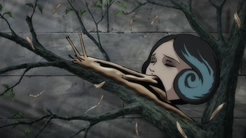
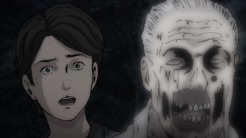
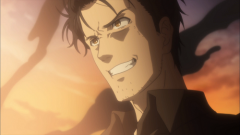


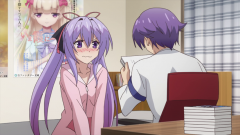
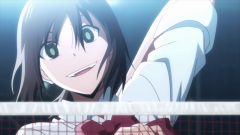
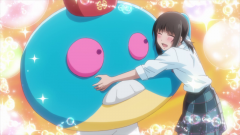
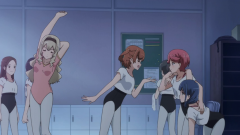
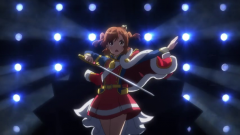

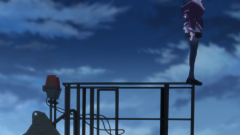


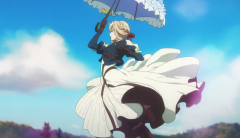

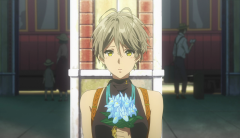
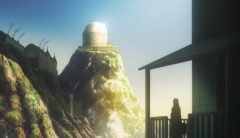
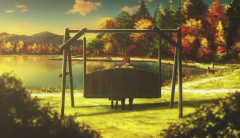
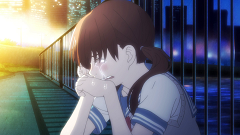
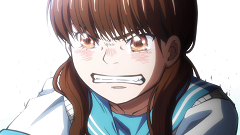
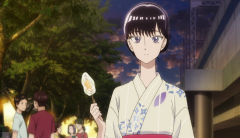
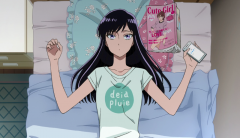
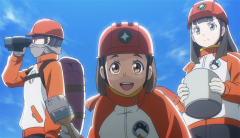

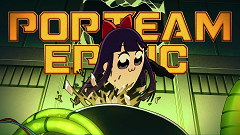
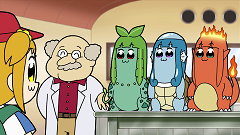
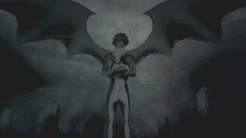
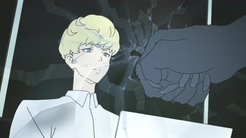
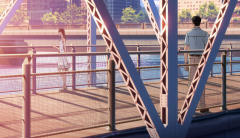
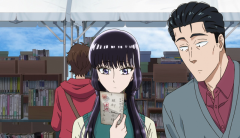


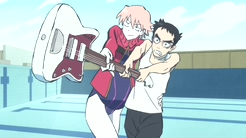
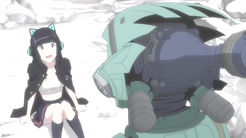


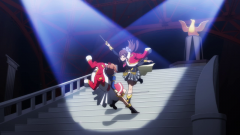
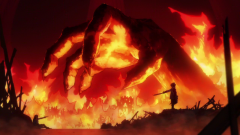
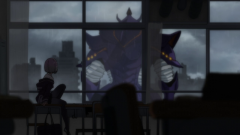
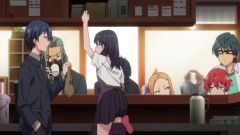
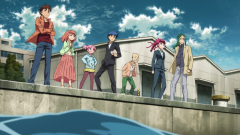
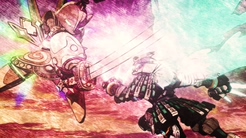
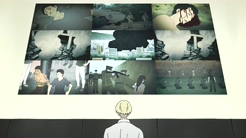

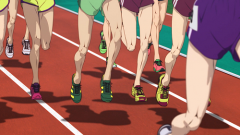
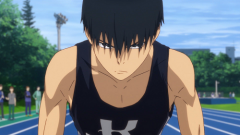
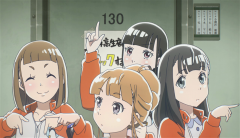
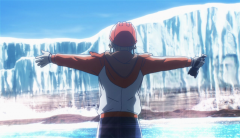
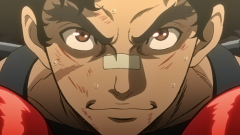

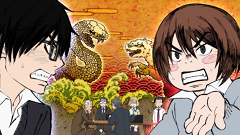
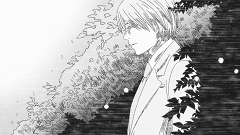
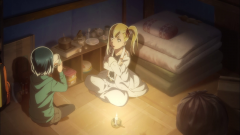
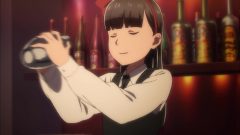
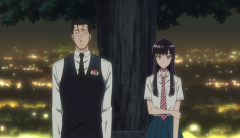
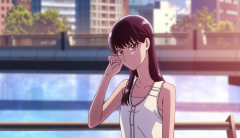
Hmm, I do like to note that I have hard time respecting gut punch endings in that its not really hard to make emotionally devastating endings by having a downer ending, hard part in that is only making viewers like characters in first place. Its much harder to do satisfying happy endings than satisfying downer or bittersweet endings. Heck, aren’t downers kind of unsatisfying by the nature and that is the point as you would want to have them ending other way?
Then again, maybe it is just the “I think its hard to appreciate tragedies when you suffer from depression” factor
I don’t know which specific shows you were referring to, but fact of the matter is that open ending and downer ending rile up people much more than happy ending. With happy ending people just watch and move on, with downer ending evokes some kind of reactions, be it good or bad response.
Thanks for the write-up. I also still haven’t finished plenty of shows last year, but reading this and several other (remaining) anibloggers unable me to prioritize which shows that I need to start/finish first.
Some notes:
1. Interesting #1 pick, although as far as I can see it’s a show that is highly rated by almost everyone. Definitely will bump Koi wa Ameagari no You ni much higher to my to-watch-list. The rest of the #10 list are great, although I still have no idea about the point of turning a shitposting page into an anime.
2. Still curious about S;G 0, as I see various different opinions about it. Some like you think of it as a huge disappointment, while some others are still okay with it or even think that it works really great as a sequel. My friend has a mixed opinion on it, thinking that the transition from game to anime made several new plot holes but actually make some parts stronger. I was still on the first several episodes and still have no idea about where it will go, so I guess eventually I will still watch it.
For me S:G 0 is a massive disappointment to the point that it made me think less of the original now.
S;G0 is, for someone who isn’t a diehard Steins;Gate fan, perfectly fine. I am very vocal about my disappointment in it, because I am a hardcore fan. The original is one of my favorites of all time, and so rightly or wrongly, I applied those expectations to the sequel.
If someone enjoys it, then awesome. I love that someone had fun with it. I was unable to because of those expectations.
Wait, you guys think Liz and the Blue Bird was all style and no substance? I haven’t seen the movie yet (I do want to though and plan to get the DVD when it comes out), but I’d like to hear more of your thoughts on this. Do you plan on doing a review of Liz, along with stuff like Maquia? I already did a review on Maquia on my LJ here: https://joyousmenma93.livejournal.com/414844.html I’d love to hear your thoughts on them.
I did recently discover one movie that I found to be hilarious and awesome: the first Haikara-san ga Tooru movie. It’s laugh out loud funny and great!
I watched Liz in theaters, so I don’t have my own copy to give it the close reading a review would require. That said, I don’t know that I’ll ever revisit it. Though the movie can stand on its own, the two lead characters were introduced in the first half of Hibike Euphonium’s second season, which I thought was a total misfire. Their relationship in the film isn’t particularly strong, with one of them seeming to be ambivalent toward the other, and the metaphor at the heart of the movie doesn’t sync with the characters’ situations as well as it should. Yamada’s artsier tendencies worked in Koe no Katachi because the emotions were big and the story moved forward at a decent clip. By contrast, Liz plods along for the majority of its runtime, and no amount of simulated depth of field or off-kilter framing can fix that weakness. The storybook-inspired visuals for the Blue Bird segments are nice, though, and the soundtrack is great.
Of the four of us, Mario is the only other writer to have seen the film. I may have spoken too broadly when I used the phrase “our writers” in my blurb, but he didn’t nominate it for any of our categories this year, either. It’s still worth a watch if you like Yamada’s stuff, though.
That’s fine. If it’s not your thing, it’s not your thing. I was just curious is all. I plan to see it when I can, because I’m just dying to find ANYTHING good that doesn’t rely on panty shots and boob grabbing anymore, and I haven’t even seen the Euphonium series at all.
I did like A Silent Voice, though I absolutely freaking hate Naoka Ueno with every fiber of my being because of how she continually treats Shouko and doesn’t get punished for her transgressions.
Oh! Definitely check out the first Haikara-san ga Tooru movie if you can! It tries to cram too much into a two hour movie, but it’s very funny, heartwarming, and genuinely good!
Didn’t get the chance to see it, so I ended up abstaining from that vote. I have heard good things, and have it on my list to watch. But I sadly couldn’t weigh in for this vote.
But yeah, if I get a chance/find a good source, I would love to watch Maquia and review it. I was just unable to see it. Both it and Liz are on my to watch list when I can get them
I know Maquia’s coming out on DVD/Blu-Ray early this February, with a deluxe edition coming out in March. If you live in the US, that is.
Ito junji was one of the few shows I’ve ever dropped in my life. I think there was only one good episode
I don’t understand what people find so disappointing about Kokkoku. I think it’s a solid show.
^^ Same here. Loved Kokkoku to bits and it’s in fact one of my top series of the year. Then again I also liked Junji Ito collection quite a bit (I found it deliciously creepy and unique, a quality many series nowadays are sorely lacking,sadly) and my favorite series of the year (by far) was Hero Mask (which I’m starting to suspect was only watched by myself and a few co-workers who were raving about it all the time… talk about an underrated/underwatched gem), so what do I know…
I personally found it started phenomenally well and then failed to use its premise to its fullest. Instead of using the time stop mechanic for interesting conflicts or situations, which it sometimes did to an extent, it went for the transforming monster route.
I was not a big fan of this myself. I wanted more of a cat and mouse game between people, not monsters.
Fair enough. Oh, well, at least we both agree that the OP was awesome
Best OP of 2018. Seriously, its so damn good.
@Aidan: Ha, like how you mentioned Rasputin, have to admit that I love that song. Really have a thing for Devilman no Uta too, it’s the type of music I miss in modern anime.
Nice that Devilman also won the action category together with Planet With. These two hyped me the hell up during their last few episodes.